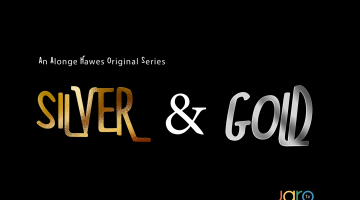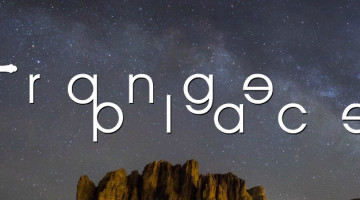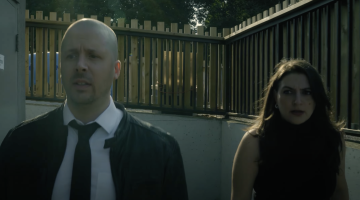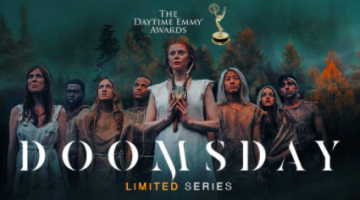So we cover a lot of shows on here, telling the stories of the people behind them, their challenges and their triumphs, the good, the bad… the ugly. All in the hopes that our dear readers will glean lessons from the experiences of others. As editor I want to expand a bit beyond the stories of the individuals, and perhaps provide a little insight that is ahead of the curve.
This is where the new ‘Tech Corner’ series of articles comes in. I’m not about to promise a specific release schedule for these suckers, but what I will say is to expect an article every time I read about some interesting new piece of technology that just might be able to help you guys out. The goal is to give you a heads up on potentially new ideas and new ways of approaching the problems we all face in no budget web production.
Today I want to talk about the amazing Sony A7s, a new-ish (it’s been out about four months now) mirrorless camera from Sony. For years now Sony has been among the leaders in video technology but their presence in the stills arena has been lacking.
What is interesting about the A7s is that this is a mirrorless stills camera obviously designed for video. And more interesting than that, is that this camera can practically see in the dark, opening up a myriad of creative possibilities in the realm of night time shooting and available light production. Now, whether or not this is something you actually want to do is another question.
 It’s been awhile since I shot with video cameras, in fact I don’t think I’ve used one more than once or twice since college. After that I discovered, as many of you also did I’m sure, the world of dSLR’s. I fell in love with the full frame images of the Canon 5D Mark II and it’s ability to shoot both stills and video with a more film like quality.
It’s been awhile since I shot with video cameras, in fact I don’t think I’ve used one more than once or twice since college. After that I discovered, as many of you also did I’m sure, the world of dSLR’s. I fell in love with the full frame images of the Canon 5D Mark II and it’s ability to shoot both stills and video with a more film like quality.
More importantly than anything, the dSLR gave me reason to shoot more. With my bulky old XHA1 I almost always opted to keep it in the case, rather than bring it out and go shooting with it. The form factor of a dSLR is a compelling reason to shoot. Mirrorless cameras like the A7s take that to the next level with an even smaller, less conspicuous profile.
Film production is a bit of an eye catcher, and for those of you in big cities shooting without permits there is a ton of value in being inconspicuous. I will never forget the fear that came with shooting on a Hollywood street corner in the middle of the night, with just a camera rig, a couple actors, a sound guy and three portable lights. Some how we pulled it off.
Aside from the group of people standing on the side walk, the most noticeable thing was probably the three light stands. Now I know a lot of you guys out there love to run and gun without any lights. Setting up lights takes time, and that time setting up takes away from time on screen. Up until now I thought the trade off wasn’t worth it. I loved the idea of creating longer, richer stories but I personally could not deal with having a lot of scenes that simply looked like shit.
This is a camera for you guys. After getting a chance to play around with an A7s first hand I knew exactly when I would love to use it. Those night scenes on the street, even with 3 lights we were upping that ISO beyond areas I was comfortable with. Heck, even shooting with an array of 500 watt bulbs there were times where I wish I had room to ramp up the ISO.

The bottom line is, with an A7s you can get shots you wouldn’t be able to with another camera. While I still don’t like the idea of shooting without lights, now when you do it wont be so obvious. Rather than scenes being dark, colors muddy, and backgrounds noisy, you’ll have a well exposed image with awkward shadows.
Shooting with dSLR’s is not entirely without issue though. Full frame sensors are simultaneously the cameras biggest strength and biggest weakness. For years now, dSLR manufacturers have been engaging in the ‘pixel wars’ with cameras generally being rated based on the number of mega pixels contained in the sensor. A Nikon D800 has over 36 megapixels and most cameras have in the high teens to mid twenties.
These cameras are designed to shoot stills, as in one picture at a time. Video, often shot at 24 frame per second, requires an intense amount of bandwidth in order to simply record that much information at once. In fact I don’t believe there is a full frame camera on the market, anywhere in the world, at any price point that could record the amount of data per second of a full resolution, raw sensor read out 24p video. (Leave a comment if I’m wrong!)
Because of that dSLR’s in video mode simply sample the sensor data. They record some lines and discard others. The visual information captured is lost simply because there is no way to record it. This is how a 5k sensor outputs a 1080p video. The videos still look great for the most part, but what we are left with are often intense moiré and aliasing effects where patterns in fabrics or other objects seem to pulsate. This is because the video recording is sampling different lines on the sensor with each pass.
This is a major reason why video cameras use smaller cropped sensors. They can’t record all of that data, so a smaller sensor allows them to record the entire sensor read out, while still providing high resolution (even 4k) without the moiré or aliasing effects.
There is something lost in the pixel wars though. That is the fact that full frame sensors are all the same size. A full frame sensor with a higher megapixel simply has more, smaller pixels. There is an advantage to having less, larger pixels. A large pixel can take in more light, and in turn have a great amount of dynamic range. In other words, while more pixels are better than less pixels, larger pixels are better than smaller pixels.
This is the concept that has lead to the Sony A7s. This is just a 12 megapixel, full frame sensor. This is enough to allow the camera to shoot in 4k (through an expensive external recorder) as well as 1080p while reading the entire sensor without skipping any lines.
The result is a camera with amazing low light performance that should be good enough to let you shoot on a nighttime street corner without any additional lights, or indoors using only your preexisting practical bulbs. Of course the image looks even better when you do light everything properly. The huge pixels on the full frame sensor are a much more natural way to record video, rather than down sampling and line skipping a higher number of smaller pixels or shooting with a standard video camera with a smaller sensor.

Obviously the camera is not without it’s drawbacks. The battery life on these things is terrible, but the most significant to me is the new FE mount. Coming from a Canon background I have a lot of lenses that don’t fit on this camera. Yes there are adapters that can manage to fit just about any lens on the FE mount, but for a Metabones EF to FE adapter we are looking at another $400. That’s a steep price to pay for an adapter that can’t provide decent auto focus speed for anyone interested in using this as a stills camera as well.
Looking at native FE glass shows a very limited selection. Obviously the mount is new, and new lenses should be coming out all the time, but damn are they expensive. It’s hard to justify dropping $1k+ on a lens similar to a better Canon version you already have.
The other major issue is the rolling shutter. A major trade off of mirrorless cameras and their electronic shutter, the rolling shutter produces something of a jello effect on vertical lines when the camera moves sideways. The effects can be minimized through the use of the cameras built in APS-C mode, which reduces your effective resolution down to 8 MP, or through optically stabilized lenses, of which there are few in the native FE mount, non-existent on manual video and legacy glass, or require the expensive metabones adapter to utilize on Canon lenses. It also helps significantly to put the camera on a rig… so much for inconspicuous.
All said the A7s is a revolutionary concept that should open up unlimited amount of creative potential for all you filmmakers seeking to squeeze every last ounce of efficiency out of your production. Whether or not you should buy one is a tougher question to answer. With so many drawbacks you may end up needing to throw thousands of dollars at the system to get it to work the way you need.
For one time projects with quick turn arounds renting, or buying with intent to resell might be the best use of the A7s. For those of you like myself looking to use something like this continuously I think I’ll be crossing my fingers and waiting for Canon to put out something like this in a non-mirrorless body. That may never happen, and if it doesn’t I think an A7s II with better battery life, 4k internal recording, less jello, and more lens options a few years down the road might be the way to go.
Until then here is something new for you to consider. Do you see any creative uses for this camera in your future? Any deal breaker drawbacks? Share your thoughts in the comments.










No Comment